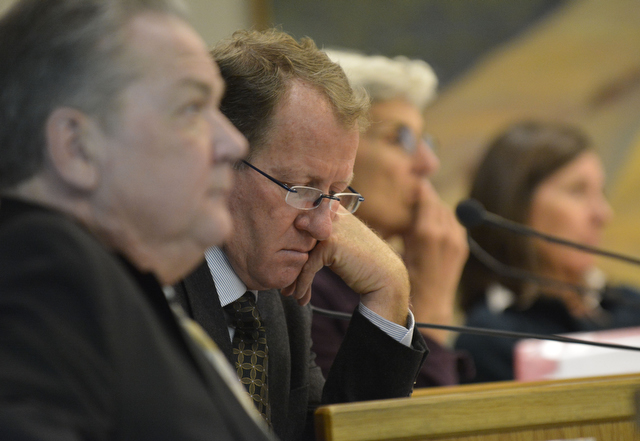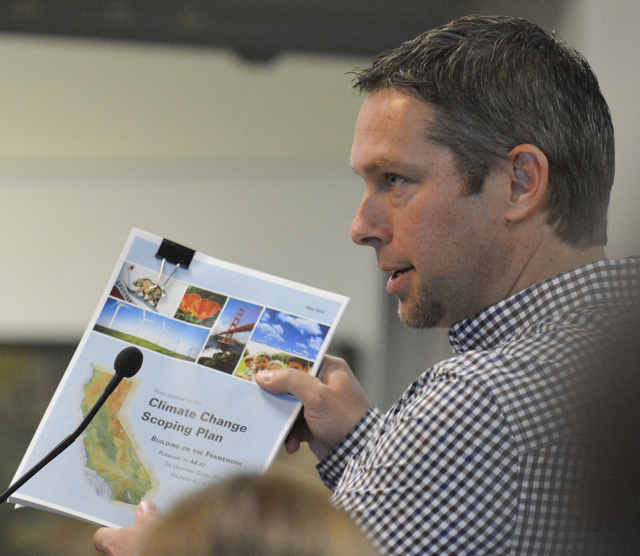County Moves Toward Tougher Emissions Limits
Planning Commission Votes to Set Stricter Thresholds on New Industrial Projects

On the heels of a related meeting held last month, the Santa Barbara County Planning Commission on Thursday voted to limit the greenhouse-gas emissions of new industrial projects — chiefly oil operations — to 1,000 metric tons per year.
That number marks a stricter threshold than the 10,000-ton figure imposed on Santa Maria Energy’s recent cyclic steaming project, but it is more lenient than the zero-ton limit pushed by environmental groups.
The 3-2 decision, with the two North County commissioners dissenting, won’t be final until the Board of Supervisors holds its vote in May. County planners presented a case for the 10,000-ton figure, which would require oil companies that exceeded it to buy reduction credits.
Of the 45 industrial pollution sources — meaning oil and gas, mining, and manufacturing projects — in the unincorporated areas of the county at the moment, 23 emit less than 1,000 metric tons of carbon dioxide annually; 22 sources emit more than 1,000. Eight of the 45 release above 10,000 metric tons a year.
For comparison’s sake, 211 cars create 1,000 metric tons of carbon dioxide pollution a year; 2,105 cars emit 10,000 metric tons.

Although staff had lobbied for the 10,000 limit on new operations, other options available to the commissioners were to create a specific threshold of their own (which they did at 1,000), set it at zero, or go the route outlined in the state’s Global Warming Solutions Act (AB 32).
Under that law, passed in 2006, California is required to cut back its emissions to 1990 levels by 2020, a goal that requires that energy projects reduce emissions by at least 15.3 percent. Several air quality overseers around the state have recently set their standards at 10,000 metric tons per year.
A decision won’t come until a meeting next week, but the county’s Air Pollution Control District (APCD) looks poised to set its own threshold at a 15.3 percent reduction for sources in its jurisdiction that emit between 10,000-25,000 metric tons per year. Pollution levels beyond that would be subject to the state’s cap-and-trade regulations.
Advocates for an AB 32 standard found themselves outnumbered by the zero-limit supporters at Thursday’s Board meeting. Ben Oakley — the environmental coordinator for ERG Operating Company, which has submitted a proposal to drill 233 new cyclic-steaming wells at its North County oil field — pushed for the 15.3 percent line.
A lawyer speaking on behalf of Pacific Coast Energy Company, which is vying to double its cyclic-steaming operations, also asked for the 15.3 percent mark. Laurie Tamura — a land-use planner for Santa Maria Energy, whose 136 cyclic-steaming wells approved in 2013 started the stir over cyclic-steaming operations here — also urged the commissioners to keep the threshold at 15.3 percent. “We’re not going to save the world in Santa Barbara County,” she said. “AB 32 is the law of the land.”
Speakers from environmental groups pushed back, asking the commissioners to consider the zero limit, which has been used by the State Lands Commission. “We face a very critical juncture here,” said Janet Blevins, who campaigned for Measure P last year.
Blevins noted the “vocabulary” associated with the threshold debate, including the phrase “business as usual” that is often used in conjunction with the AB 32 threshold. “In 2015, we can’t be talking about business as usual because business as usual has gotten us to this place,” she said.
Commissioners Michael Cooney, Cecilia Brown, and Joan Hartmann all voted in favor of the 1,000-ton line. “I find this a very intellectual, challenging matter. The fluidity and how things are changing make it that much more complicated,” Hartmann said. “I think the atmosphere has long been regarded as a free good. It’s not a free good anymore.”



